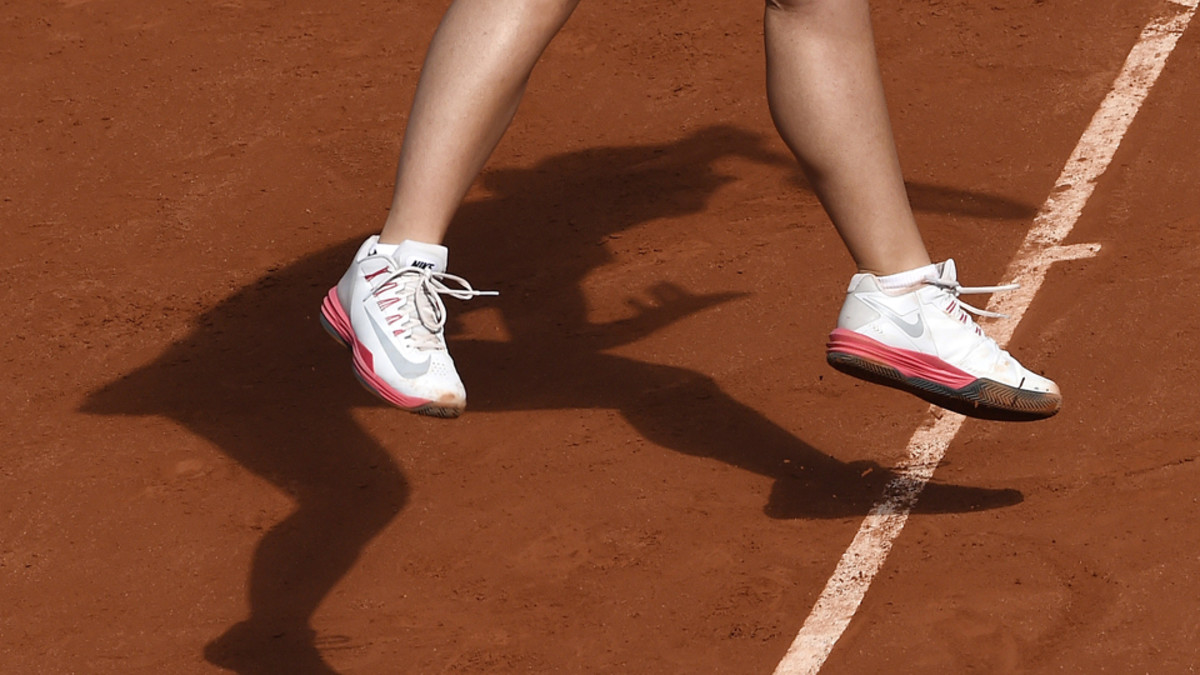How clay court sneakers are created for Roland Garros
Oh, the slide. Clay courts—such as the French Open’s Roland Garros—provide a distinct tennis move. The shoes underfoot need to accommodate the sliding needs of the player above.
The change in designing a clay court tennis shoe rests firmly on the outsole, the portion in direct contact with the crushed red brick and limestone that makes up a clay court surface. CécileGindre, Babolat’s footwear product manager based in Paris, tells SI.com there must be a “perfect balance of controlled sliding when going to the ball and grip to restart.”
Ana Ivanovic's new French Open kit combines fashion and performance
The key? “It is all about evacuating the clay with a full herringbone shape and a flat outsole,” Gindre says.
The popular shoe tread pattern of zigzagging herringbone grip self cleans the clay from the bottom of the foot when the shoe flexes, all while providing the most grab on the surface. Spreading the pattern from heel to toe puts the specialized rubber grip on every possible contact point.
Flattening the outsole makes the shoe “all about contact with the ground.”
Babolat has partnered with French company Michelin to study ground contact and rubber. The rubber on the new Michelin-built BabolatPropulseBPM outsole was directly inspired by road rally tires, Gindre says, as Babolat and Michelin have established parallels between different road and tennis court surfaces.
“The outsole’s shape and thickness, specific sculptures and rubber make-up are all important variables.”
The differing outsole gives a slightly different feel to a clay court shoe, as the clay outsole offers more flexibility than a hard court shoe and the flat sole brings more stability to footwork.
In the new Babolat shoe, technology above the sole includes a 3D insert in the forefoot surrounded by a foam that springs to its original position after each compression. With 80 percent of tennis footwork laterally or diagonally on the forefoot, having materials that move back into position and help stabilize the foot proves paramount, Gindre says.
With the construction of a clay court shoe focused on ground contact, players can—hopefully, at least—retain stability while mastering the clay slide.
Tim Newcomb covers stadiums, design and gear for Sports Illustrated. Follow him on Twitter at @tdnewcomb.






